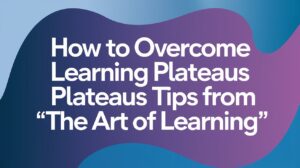Conflicts and disagreements can be such a part of human interaction. In case if not taken care of in the right manner, they may keep on fostering more misunderstandings, frustration, and disjointed relationships. If handled constructively, conflicts are chances for growth, better communication, and strong bonds. The article discussed below will present a few practical ways of resolving such conflicts and disagreements in a constructive yet positive manner.
1. Making Sense of the Nature of Conflict
Conflict is a situation in which two or more parties have incompatible goals, needs, or desires. It must be recognized that all conflicts are not intrinsically negative. What creates the problem is the poor management of conflict. If it is managed effectively, it actually results in greater understanding, closer relationships, and creative solutions.
Conflicts
- Interpersonal Conflict: This occurs between individuals due to personality differences, communication breakdowns, or value clashes.
- Intragroup conflict: It occurs within a group or team; this generally occurs when there is disagreement over or competition for resources.
- Intergroup Conflict: This occurs between different groups, departments, or organizations and deals with competing goals or interests.
2. The Importance of Constructive Confrontation of Conflicts
How conflicts are resolved either strengthens or weakens relationships. Constructive conflict resolution focuses on understanding the root cause, finding solutions, and communicating better between parties involved. This therefore assists in:
- Building trust: Open dialogue creates trust and transparency.
- Improve teamwork: The resolution of disagreements may bring people together for a common cause.
- Stimulating personal growth: Conflict management teaches emotional intelligence, patience, and self-awareness.
3. Practical Steps to Resolve Conflicts and Disagreements
1. Keep Cool
Conflicts can be emotionally heightened, and usually, the tendency to react immediately may sometimes worsen the situation. Take a deep breath, step back, and compose oneself. A cool composure invites the other party to be equally cool, thus providing a more propitious ground for resolution.
2. Active Listening and Empathizing
One of the key elements in any resolution process is listening. Practice active listening by giving undivided attention, recognizing concerns, and showing empathy. This makes the other party feel heard and understood, and that is oftentimes half the battle to resolving an issue.
3. Communicate Clearly and Honestly
Clear, honest communication is required. Express your feelings, concerns, and needs respectfully and without blame. Use “I” statements, such as “I feel” or “I think,” which avoid giving a sense of confrontation. For example, if you say, “You never listen to me,” instead express it this way: “I feel unheard when we discuss this.”
4. Focus on the Issue, Not the Person
Personal attacks escalate the situation. Instead of attacking the person, persist in focusing on the behaviour or issue. To help keep the conversation solution-oriented, discuss specific actions or decisions, not the character of the individual.
5. Seek Common Ground
Conflict is easily resolved when both parties can see some middle ground on which they can settle. Try to find a point of agreement or something on which you both have a common interest. This may give a sense of unity and perhaps lay the foundation to resolve your disagreement.
6. Be Open to Compromise
With any luck, compromise will offer the best resolution. Give a little so that a compromise satisfactory for both of you may be reached. Attempt to find middle ground where both parties can leave feeling their needs have been met.
7. Establish Boundaries and Follow Through
Once the resolution has been found, setting clear boundaries is key to avoiding further conflict. Even more so, it’s following through on the agreement being upheld and a continued positive relationship.
4. The Role of Emotional Intelligence in Conflict Resolution
Emotional intelligence plays a significant role in resolving conflicts constructively. Individuals with high EQ have a better grip on their own emotions and can therefore understand those of others. This helps them keep calm during disagreements, empathize with others’ points of view, and work through tough interpersonal situations.

Key components of emotional intelligence involved in conflict resolution include:
- Self-awareness: awareness of one’s emotional hot buttons.
- Self-regulation: maintaining emotional responses to keep calm and focused.
- Empathy: To understand and acknowledge feelings of another person.
- Social skills: Communicating it clearly and trying to resolve the conflicts.
5. Conflict Resolution Techniques in Various Settings
1. At the Workplace
Conflicts at work are the result of competition, miscommunication, or personality clashes. Solving these decently is a must in order to keep the atmosphere healthy to work in. Allow open dialogues, respect the difference in opinions, and involve HR or a mediator, if needed.
2. Personal Relationships
Personal relationship disagreements are largely on unmet expectations or failure of communication. In such cases, emotional proximity, dedicated time for talking, and counseling where needed may be the needed interventions.
3. Social and Community Groups
Disagreements at the social or community levels can be resolved through inclusiveness, equal participation, and democratic decision-making. The mediations may help to engage in discussions between the parties of difference.
6. Recommended Books for Conflict Resolution
Further develop your conflict resolution skills with the following recommended books:
- “Crucial Conversations: Tools for Talking When Stakes Are High” by Kerry Patterson, Joseph Grenny, Ron McMillan, and Al Switzler
This is a very helpful book that will provide you with techniques on how to conduct one of those difficult conversations in such a manner as to achieve understanding and avoid bruised feelings. - “Nonviolent Communication: A Language of Life” by Marshall B. Rosenberg
Rosenberg then follows up with an introduction of non-violent communication, a significant tool in conflict resolution by means of empathy and connection. - “The Anatomy of Peace: Resolving the Heart of Conflict” by The Arbinger Institute
An innovative look into conflict resolution based on how mindset and attitudes serve as a cause of both conflict and peace. - “Getting to Yes: Negotiating Agreement Without Giving In” by Roger Fisher, William Ury, and Bruce Patton
This classic text on negotiation gives techniques for finding mutually beneficial solutions in conflict situations.
7. Conclusion
Conflict is sad, but inevitable; it does not have to be destructive, nor does it need to denote poor relationships. Approach conflicts with emotional intelligence: listen to the other side, clearly communicate your thoughts, and know how to compromise; thus, you will manage to resolve your disagreements in such a way that the relationships will become stronger and personal growth will be enhanced. Be it at your workplace, home, or social groups, constructive conflict resolution is a skill that pays dividends for everyone concerned.







